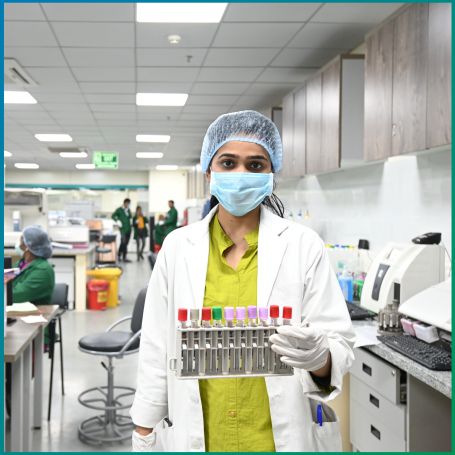
The C/S Clot Test, also known as Culture and Sensitivity Test for Clot Samples, is a specialized diagnostic procedure used to identify infections associated with blood clots.


Blood clots can form in various parts of the body, including the veins, arteries, and organs, and may become a source of infection, particularly in patients with compromised immune systems or those who have undergone surgery. The C/S Clot Test helps in detecting whether the clot is infected by bacteria, fungi, or other pathogens and guides treatment decisions by determining which antibiotics or antifungal medications are most effective.
1] Sample Collection: The test begins with the collection of a blood clot or clot-related material. Depending on the clinical scenario, the clot may be aspirated using a syringe or obtained surgically during a procedure to remove the clot. The collected sample is carefully preserved to prevent contamination.
2] Laboratory Analysis: Once the sample is collected, it is sent to the laboratory for analysis. In the lab, the clot is cultured, meaning that it is incubated in conditions that promote the growth of microorganisms (bacteria, fungi, or viruses). This allows the lab technicians to detect any pathogens that might be present.
3] Identification of Pathogens: After culturing, the lab technician will identify any microorganisms that have grown from the clot sample. This can include a wide range of bacteria (such as Staphylococcus aureus, Escherichia coli, and Pseudomonas aeruginosa) or fungi (like Candida and Aspergillus).
4] Sensitivity Testing: In the next phase, sensitivity testing is performed. This involves exposing the identified pathogens to various antibiotics or antifungal medications to determine which ones are most effective at killing or inhibiting the growth of the microorganisms. This helps the doctor choose the most appropriate treatment for the infection.
5] Reporting the Results: Once the identification and sensitivity testing are complete, the results are compiled into a report and shared with the healthcare provider. The report will detail the pathogen(s) found in the clot and provide information on which medications are most effective.
1] Identification of Pathogen: The test will reveal any microorganisms (bacteria, fungi, or viruses) that are present in the blood clot, allowing for accurate diagnosis.
2] Sensitivity Information: The sensitivity testing will provide detailed information on which antibiotics or antifungal medications will be most effective in treating the identified pathogens.
3] Guidance for Treatment: Based on the results, doctors can adjust the patient’s treatment plan to include the most effective antibiotics, antifungals, or other therapies.
4] Evaluation of Resistance: If the identified microorganism is resistant to common antibiotics, the sensitivity test will help identify alternative treatments, reducing the risk of ineffective therapy.
Choosing Diagnopein for your C/S Clot Test guarantees accurate and reliable diagnostic results, backed by our commitment to advanced healthcare and patient care. At Diagnopein, we use state-of-the-art laboratory equipment and follow the highest standards of clinical practices to ensure precise identification of pathogens in clot samples. Our expert team of lab technicians and medical professionals work diligently to provide you with quick turnaround times, so you can begin the appropriate treatment as soon as possible. We also offer convenient home sample collection services, making it easier for you to get tested without the need to visit the clinic. With a focus on personalized care, affordable pricing, and expert guidance throughout the diagnostic process, Diagnopein ensures that you receive the best possible care and support for managing clot-related infections.
A blood clot sample is collected, either through aspiration or surgical removal, and sent to the lab for culturing. Pathogens are identified, and sensitivity testing is done to determine the most effective treatment.
It can diagnose infections in deep vein thrombosis (DVT), pulmonary embolism (PE), endocarditis, septic thrombophlebitis, and other clot-related infections.
It helps detect infections in blood clots, which can lead to serious conditions like sepsis or pulmonary embolism. The test guides targeted treatment by identifying the pathogen and its drug sensitivity.
Generally, no special preparation is required, but your doctor may provide specific instructions based on your condition and any medications you're currently taking.